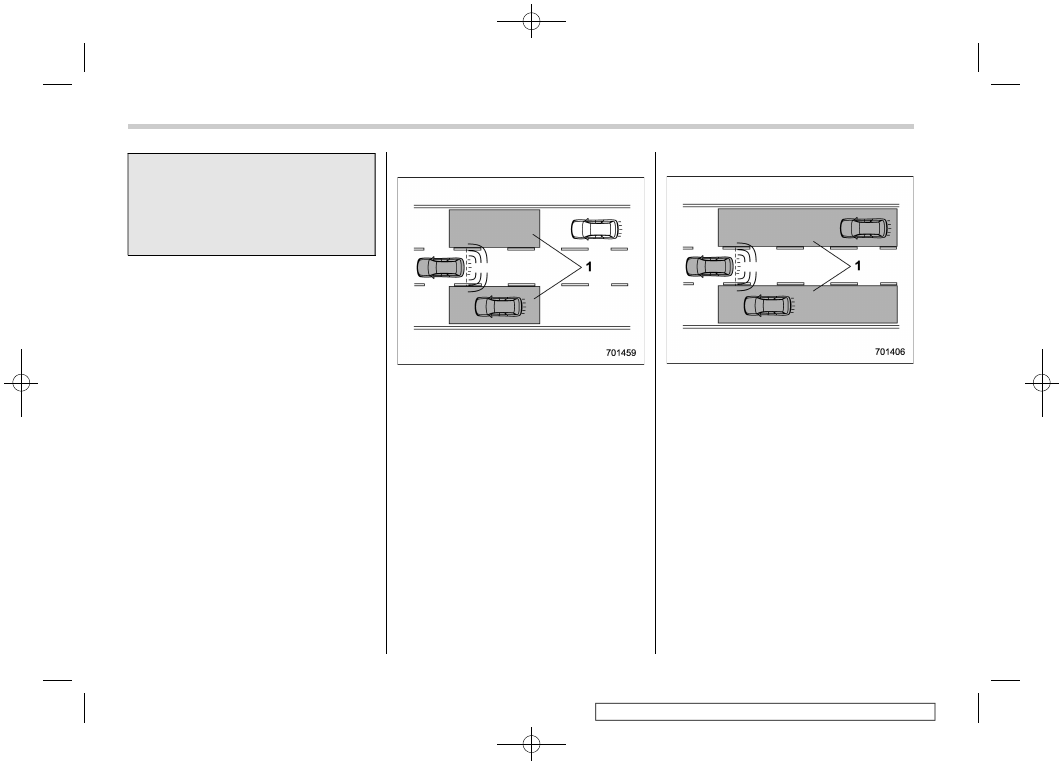Subaru Outback (2019 year). Instruction - part 21

(336,1)
北米Model "A2550BE-A" EDITED: 2018/ 5/ 9
at all even when a vehicle is present
in a neighboring lane or approach-
ing from either side.
The driver is responsible for paying
attention to the rear and side areas
of the vehicle.
&
System features
BSD/RCTA consists of the following func-
tions.
.
To detect a vehicle in a blind spot on an
adjacent lane or a vehicle approaching at
high speed while driving the vehicle (Blind
Spot Detection)
.
To detect a vehicle approaching from
the right or left while reversing the vehicle
(Rear Cross Traffic Alert)
The system uses radar sensors for the
following features.
NOTE
The BSD/RCTA radar sensor has been
certified by the radio wave related laws
of the U.S. and Canada. When driving in
other countries, certification of the
country where the vehicle is driven
must be obtained. For certification in
the U.S. and Canada, refer to “Certifica-
tion for the BSD/RCTA” F7-56.
!
Blind Spot Detection (BSD)
1)
Operating range
The system notifies the driver of the
presence of vehicles in its blind spot.
.
If the system detects a vehicle in its
blind spot, it warns the driver by illuminat-
ing the BSD/RCTA approach indicator light
(s) on the outside mirror(s).
.
If the driver operates the turn signal
lever in the direction where the BSD/RCTA
approach indicator light is illuminating, the
system warns the driver of dangers by
flashing the BSD/RCTA approach indica-
tor light.
!
Lane Change Assist (LCA)
1)
Operating range
The system notifies the driver of vehicles
approaching at a high speed in the
neighboring lanes.
.
If the system detects a vehicle ap-
proaching at a high speed in the neighbor-
ing lanes, it warns the driver of dangers by
illuminating the BSD/RCTA approach in-
dicator light(s) on the outside mirror(s).
.
If the driver operates the turn signal
lever in the direction where the BSD/RCTA
approach indicator light is illuminating, the
system warns the driver of dangers by
flashing the BSD/RCTA approach indica-
tor light.
Starting and operating/BSD/RCTA
7-50